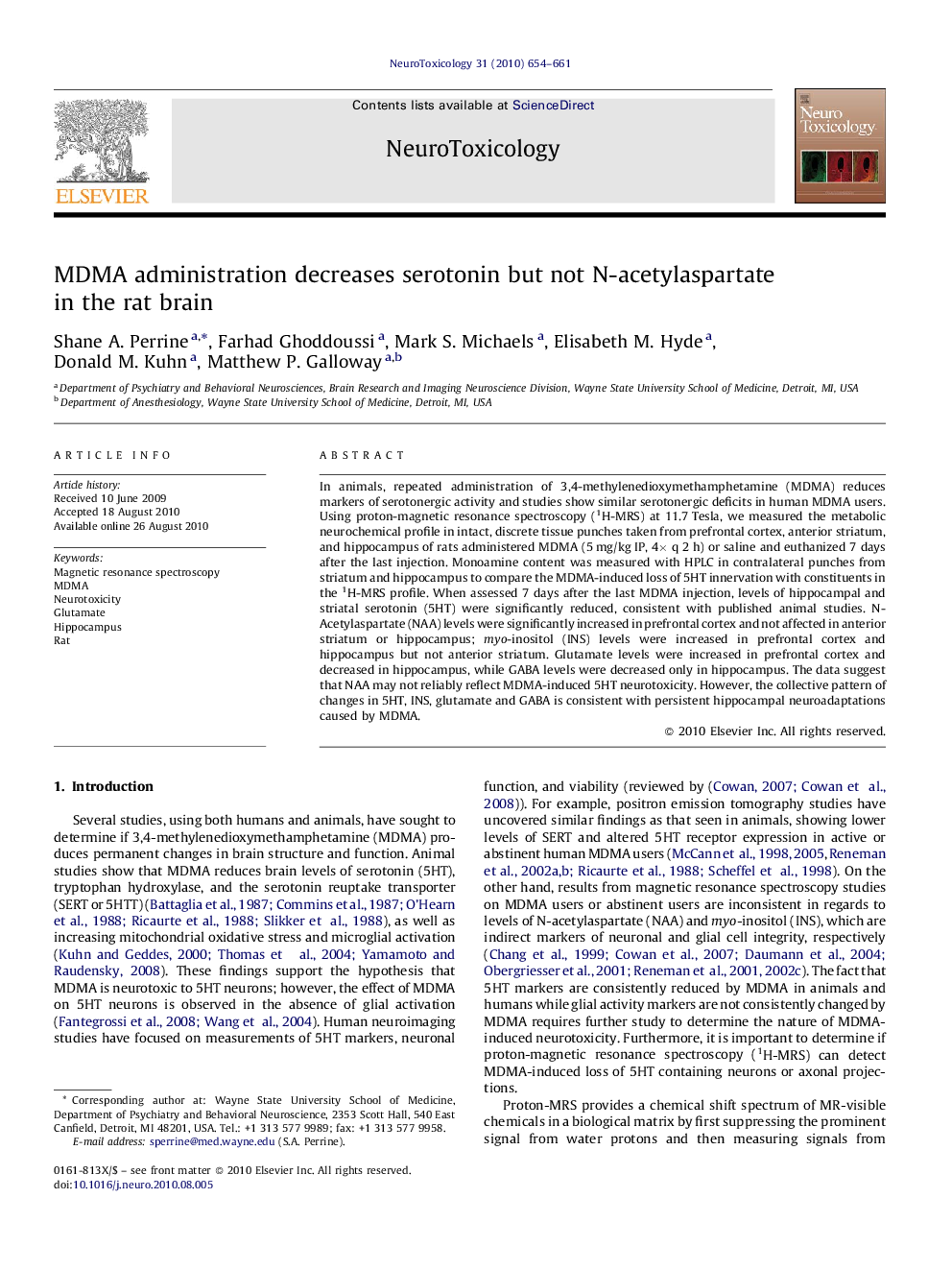| Article ID | Journal | Published Year | Pages | File Type |
|---|---|---|---|---|
| 2590558 | NeuroToxicology | 2010 | 8 Pages |
In animals, repeated administration of 3,4-methylenedioxymethamphetamine (MDMA) reduces markers of serotonergic activity and studies show similar serotonergic deficits in human MDMA users. Using proton-magnetic resonance spectroscopy (1H-MRS) at 11.7 Tesla, we measured the metabolic neurochemical profile in intact, discrete tissue punches taken from prefrontal cortex, anterior striatum, and hippocampus of rats administered MDMA (5 mg/kg IP, 4× q 2 h) or saline and euthanized 7 days after the last injection. Monoamine content was measured with HPLC in contralateral punches from striatum and hippocampus to compare the MDMA-induced loss of 5HT innervation with constituents in the 1H-MRS profile. When assessed 7 days after the last MDMA injection, levels of hippocampal and striatal serotonin (5HT) were significantly reduced, consistent with published animal studies. N-Acetylaspartate (NAA) levels were significantly increased in prefrontal cortex and not affected in anterior striatum or hippocampus; myo-inositol (INS) levels were increased in prefrontal cortex and hippocampus but not anterior striatum. Glutamate levels were increased in prefrontal cortex and decreased in hippocampus, while GABA levels were decreased only in hippocampus. The data suggest that NAA may not reliably reflect MDMA-induced 5HT neurotoxicity. However, the collective pattern of changes in 5HT, INS, glutamate and GABA is consistent with persistent hippocampal neuroadaptations caused by MDMA.
